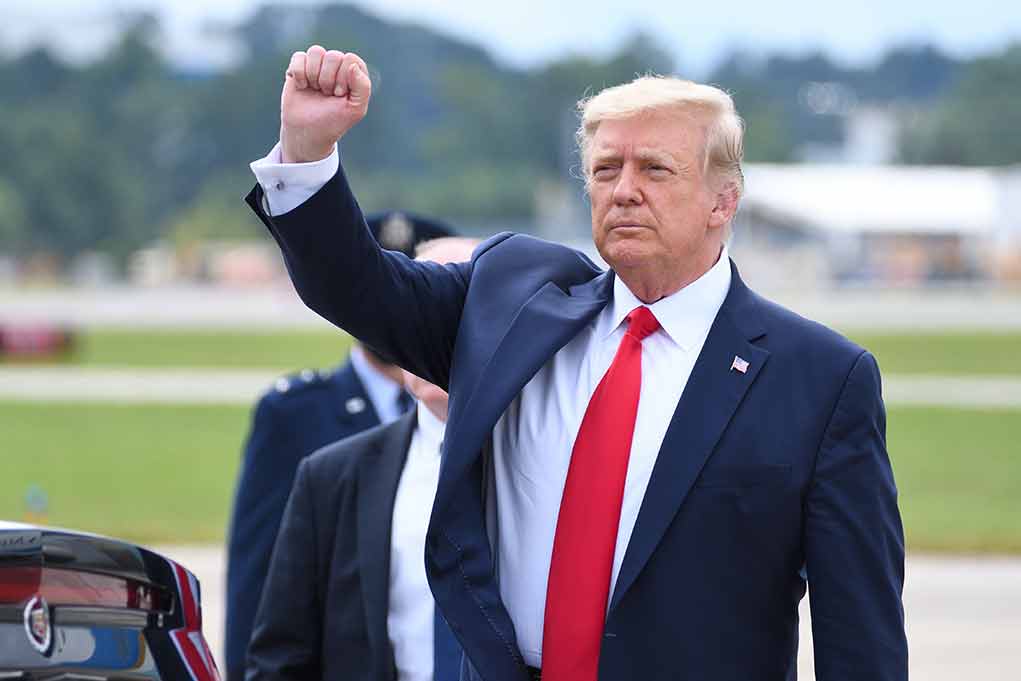
In a bold move that sent shockwaves through international trade, President Trump’s tariff ultimatum forced Canada and Mexico to address border concerns within 24 hours.
Key Takeaways
- Trump imposed tariffs on Canada, Mexico, and China to combat contraband and illegal immigration
- Canadian energy products received a lower 10% tariff to minimize impacts on fuel prices
- The move could disrupt supply chains and increase consumer prices on various goods
- Critics warn of potential negative economic impacts and retaliation from affected countries
- The tariffs may jeopardize the USMCA trade agreement between the U.S., Canada, and Mexico
Trump’s Tariff Strategy: A Double-Edged Sword
In a move that temporarily cools tensions between the United States, Canada, and Mexico, President Donald Trump has agreed to pause the tariff threats against his two largest trading partners for 30 days. This decision comes after both nations took significant steps to address Trump’s concerns over border security and drug trafficking, including heightened enforcement efforts. The brief reprieve offers a chance for continued negotiations, reducing the immediate threat of a trade war that could have disrupted economic stability and raised prices for consumers. However, the uncertainty remains, as Trump retains the option to reinstate tariffs, leaving the global economy on edge.
The tariffs, set at 25% for most goods and 10% for Canadian energy products, aim to pressure these countries into taking more decisive action against drug trafficking and illegal border crossings. Trump’s administration argues that this approach is necessary to protect American lives and national security. However, economists warn that these measures could lead to higher prices for U.S. consumers on a wide range of products, from cars and electronics to lumber and food.
FOR IMMEDIATE RELEASE
02/01/25
Fact Sheet: President Donald J. Trump Imposes Tariffs on Imports from Canada, Mexico, and ChinaADDRESSING AN EMERGENCY SITUATION: The extraordinary threat posed by illegal aliens and drugs, including deadly fentanyl, constitutes a national…
— Sharyl Attkisson 🕵️♂️💼🥋 (@SharylAttkisson) February 2, 2025
The Contraband Crisis: Fact vs. Fiction
While the Trump administration cites the contraband crisis as a key justification for the tariffs, some fact-checkers have questioned the accuracy of the claims. NPR reported that Trump’s statements about the scale of the crisis and Canada’s role in it were false. In fact, the contraband crisis has been improving, with overdose deaths dropping by over 21% since June 2023. This discrepancy raises questions about the true motives behind the tariff strategy.
“killing 250,000 [or] 300,000 American people per year.” – President Trump
Despite these contradictions, the Trump administration remains steadfast in its approach. A senior official declared, “This is a beautiful, beautiful example of promises made, promises kept by President Trump.” This sentiment resonates with Trump’s base, who have long supported his tough stance on border security and international trade.
White House: “President Trump is taking bold action to hold Mexico, Canada, and China accountable to their promises of halting illegal immigration and stopping poisonous fentanyl and other drugs from flowing into our country.” pic.twitter.com/FjwnWx9kjM
— Jerry Dunleavy IV 🇺🇸 (@JerryDunleavy) February 2, 2025
Economic Implications and Industry Concerns
The tariffs have sparked concern across various industries. The auto sector, construction, and food supply chains are particularly vulnerable to these new trade barriers. The United Auto Workers union and other labor organizations have expressed worries about the impact on workers and industries reliant on cross-border trade. Additionally, the tariffs could jeopardize the United States-Mexico-Canada Agreement (USMCA), a trade pact that has allowed for tariff-free movement of products between the three countries.
“We need to protect Americans, and it is my duty as President to ensure the safety of all,” – Trump
Businesses, including homebuilders and alcohol producers, have warned of negative economic impacts. The potential for retaliatory measures from Canada and Mexico could make U.S. products less competitive in those markets, affecting exports and further complicating the economic landscape. The Canadian lumber industry, already facing challenges, could be particularly hard hit, potentially impacting U.S. home prices.
A Call to Action or Political Posturing?
Trump’s executive order emphasizes the need for immediate action to protect U.S. citizens and national security. It expands a national emergency declared at the southern border to include threats from the northern border, citing the International Emergency Economic Powers Act (IEEPA) and the National Emergencies Act (NEA) as legal authorities. This move underscores Trump’s commitment to his “America First” agenda and his willingness to use executive power to address perceived national threats.
“A Nation without borders is not a nation at all.” – Donald J. Trump
Critics argue that this approach may be more about political posturing than effective policy. The timing of the order, coming in the lead-up to an election year, has led some to question whether it’s a genuine attempt to address border issues or a calculated move to energize Trump’s base. Regardless of the motivation, the impact on international relations and the global economy is likely to be significant and far-reaching.
As the situation unfolds, all eyes will be on Canada, Mexico, and China to see how they respond to Trump’s ultimatum. Will this aggressive approach yield the desired results in combating drug trafficking and illegal immigration, or will it lead to a damaging trade war? Only time will tell, but one thing is certain: Trump’s tariff strategy has once again shaken up the international stage and put America’s trade relationships to the test.
Sources:
- Trump slaps tariffs on Canada, Mexico, China, risking higher prices for U.S. consumers
- Imposing Duties to Address the Flow of Illicit Drugs Across Our Northern Border – The White House
- Trump used fentanyl to justify tariffs, but the crisis was already easing
- Trump stretches trade law boundaries with Canada, Mexico, China tariffs | Reuters












